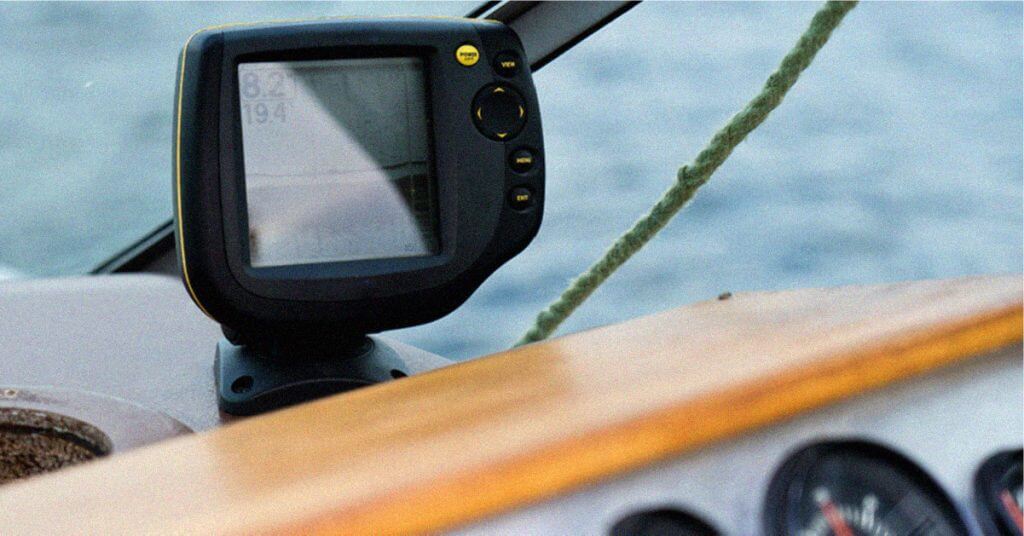New fish finding technology is coming out everyday and as a result, old technology sometimes becomes obsolete. That has become the case in this Lowrance HDS Carbon review.
We’re looking at a fish finder that is now discontinued but can still be found if you look carefully enough. I’ve spent plenty of days on the water with this unit in years past and have a lot of fond memories – but times have changed and we grow out of our old fish finders!
In this review, we’re going to talk about the main features of the HDS Carbon and provide you with some great alternatives if you were hoping to purchase this fish finder for your boat.
Let’s get to it.
Table of Contents
Overview of the Lowrance HDS Carbon
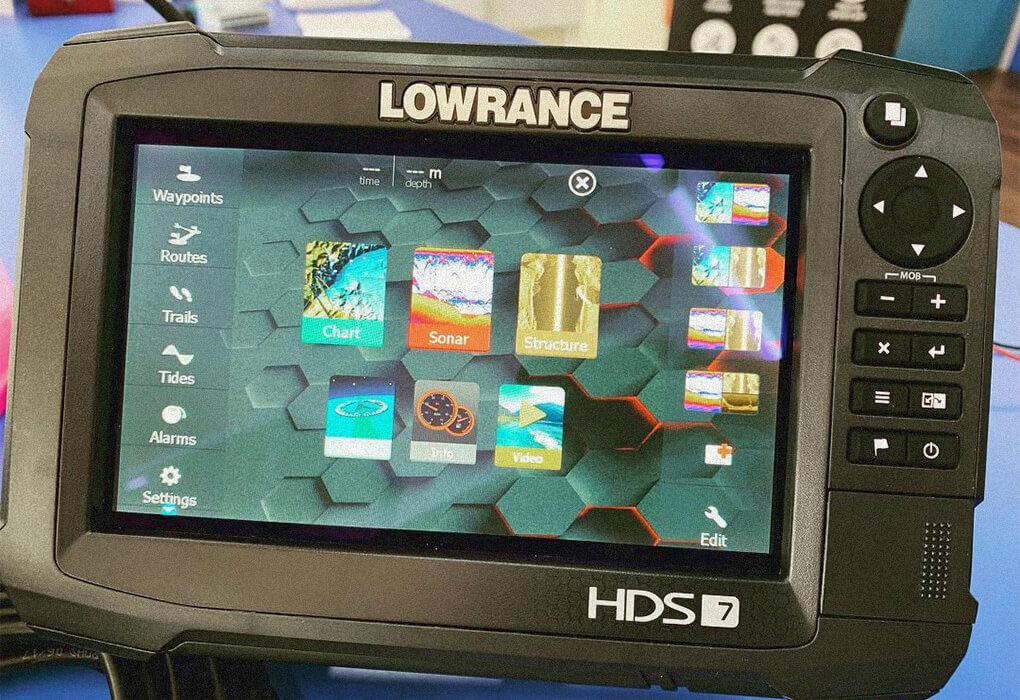
The Lowrance HDS Carbon was first released in the winter of 2016 and was designed to be an upgrade from the previous HDS Gen3 series.
The HDS Carbon series is available in several models, including the HDS-7 Carbon, HDS-9 Carbon, HDS-12 Carbon, and HDS-16 Carbon.
The Lowrance HDS Carbon was eventually discontinued in 2020, with the introduction of the new Lowrance HDS Live series.
The Lowrance HDS Live series was designed to offer improved functionality and features compared to the HDS Carbon.
Things to Consider Before Buying a Fish Finder
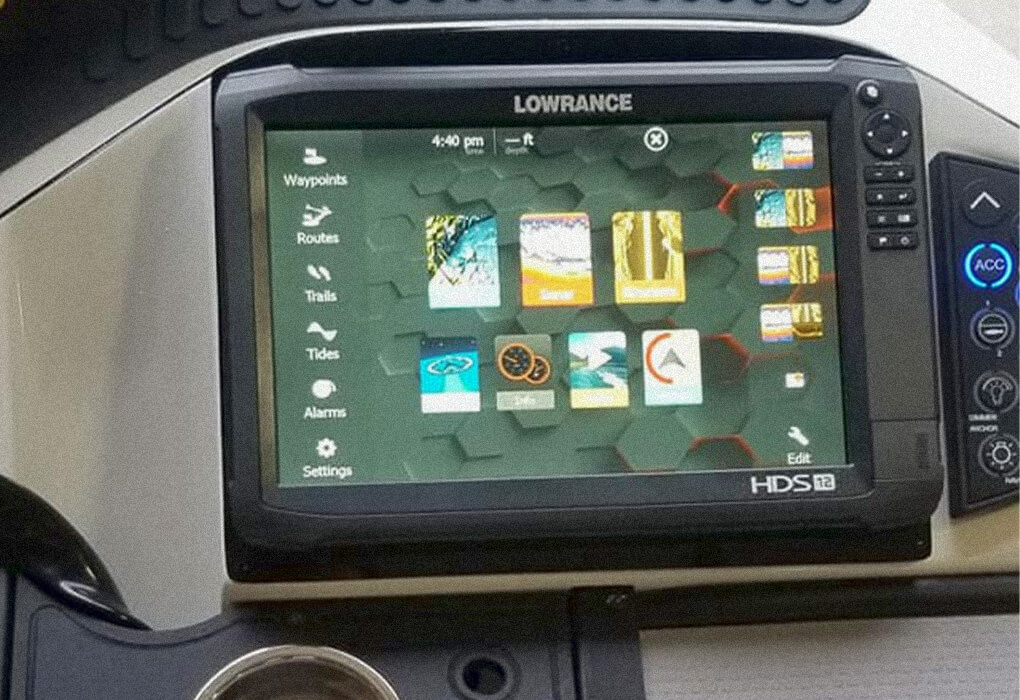
Before diving into the specific features of the Lowrance HDS Carbon, it’s important to understand the key factors to consider when selecting a fish finder.
Sonar Type
The type of sonar is one of the most critical factors to consider when purchasing a fish finder.
Downscan sonar is designed to provide a high-resolution view of the bottom of the water, while sidescan sonar provides a wide-angle view of the underwater environment.
A combination of both downscan and sidescan sonar is ideal for optimal fish finding capabilities.
GPS and Mapping
A GPS and mapping feature is an important consideration when selecting a fish finder. GPS and mapping allow you to pinpoint your location on the water and create maps of your favorite fishing spots.
Screen Size/Display
The screen size and display quality are important factors to consider when selecting a fish finder. A larger screen size allows for a more comprehensive view of the underwater environment, making it easier to locate fish.
Additionally, a high-quality display ensures that you can see the screen in all lighting conditions.
Main Features and Benefits of the Lowrance HDS Carbon
Now that you understand the key factors to consider when selecting a fish finder, let’s take a closer look at the main features and benefits of the Lowrance HDS Carbon.
Active Imaging 3-in-1 Transducer
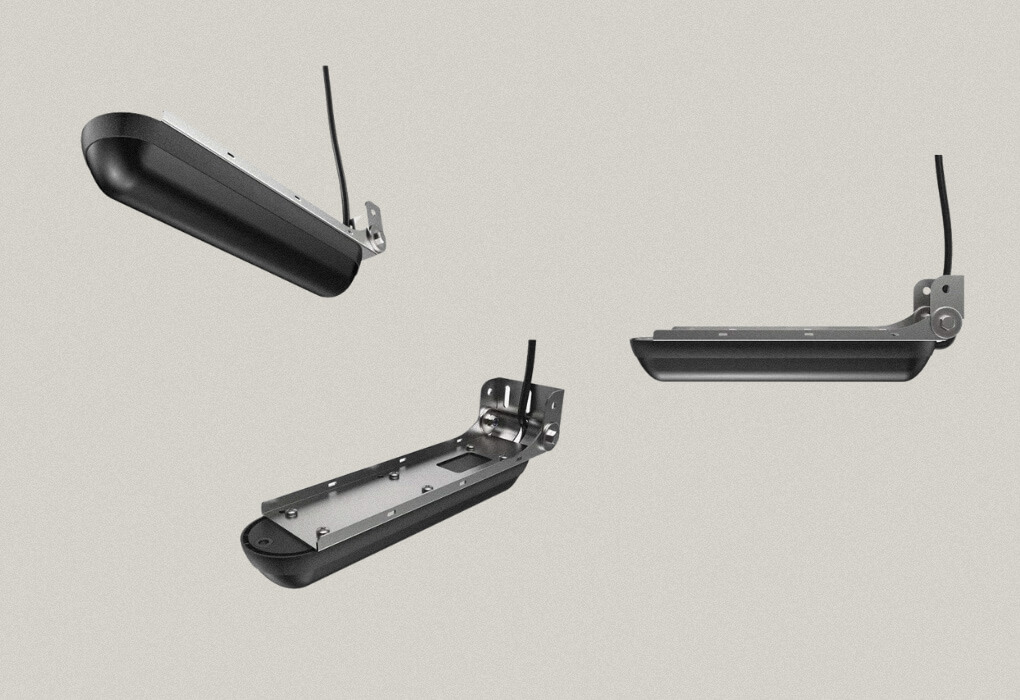
The Active Imaging 3-in-1 Transducer is a versatile and advanced transducer system that comes with the Lowrance HDS Carbon fish finder.
This transducer system provides a combination of CHIRP sonar, Downscan Imaging, and sidescan sonar which offers the highest level of versatility.
This is part of what I love most about the Lowrance brand. No matter what tier you’re at with their fish finders, they offer the most premium features and allow you to essentially build your own fish finder.
I can’t help but find this to be different from brands like Garmin and Humminbird.
Anyway, back to the Lowrance Carbon review…
The CHIRP sonar is a type of sonar that uses multiple frequencies to provide detailed and accurate readings of the water column, including fish and other structures.
The Downscan Imaging provides a detailed view of the bottom of the water column, including structures such as rocks, logs, and weeds.
The sidescan sonar provides a wide-angle view of the water column to the sides of the boat, allowing you to see fish and other structures that may not be directly beneath the boat.
The Active Imaging 3-in-1 Transducer is designed to be easy to install to a trolling motor and provides reliable and accurate readings.
StructureScan 3D
StructureScan 3D is an advanced imaging technology that is available on select models of the Lowrance HDS Carbon fish finder.
This technology provides a three-dimensional view of the underwater environment, allowing you to see the structure of the bottom of the water column in more detail.
Again, one of those premium features that the best Lowrance fish finders have been offering forever. They’re one of the first to do it.
The CHIRP sonar sends out a range of different frequencies to reduce the amount of deadspace on your readings. It’s essentially a great combination of down and sidescan built into one.
Gen3 Graphs w/C-Map Genesis
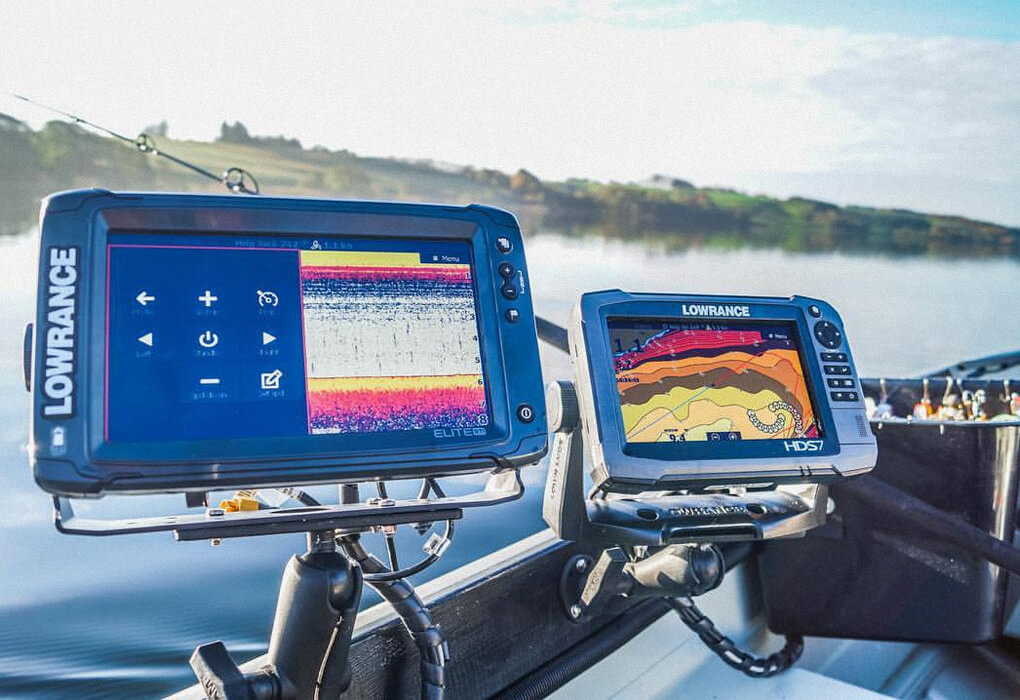
One of the standout features of the Lowrance HDS Carbon is its Gen3 Graphs w/C-Map Genesis.
C-Map Genesis is a mapping software that enables anglers to create high-definition contour maps of previously unmapped bodies of water or improve upon existing maps.
The Genesis technology uses sonar recordings and uploads them to the cloud for processing, which creates highly detailed and accurate maps of the underwater terrain.
The G3 (or Generation 3) graphs refer to the advanced fish-finding technology that Lowrance HDS Carbon fish finders are equipped with.
These graphs use high-resolution sonar imaging to provide anglers with clear and detailed views of the fish and structures beneath the surface of the water.
You can also share your maps with other anglers, making it easier to find the best fishing spots.
FishReveal
It’s well documented that FishReveal is one of my favorite features on any fish finder anywhere.
This technology helps you separate fish from structure better than anything else on the market.
FishReveal technology combines traditional CHIRP sonar and DownScan Imaging to provide anglers with a detailed view of the underwater environment.
CHIRP sonar sends out a continuous range of frequencies to create a more detailed and accurate picture of the underwater terrain and fish, while DownScan Imaging provides anglers with a detailed view of the structure and bottom of the water.
With FishReveal technology, the CHIRP sonar and DownScan Imaging are overlaid on top of each other, allowing anglers to easily identify fish and structures on a single screen.
This makes it easier for anglers to quickly determine the location, size, and species of the fish they are targeting. Few do it better than Lowrance and it’s available on the HDS Carbon.
Large Screen Size
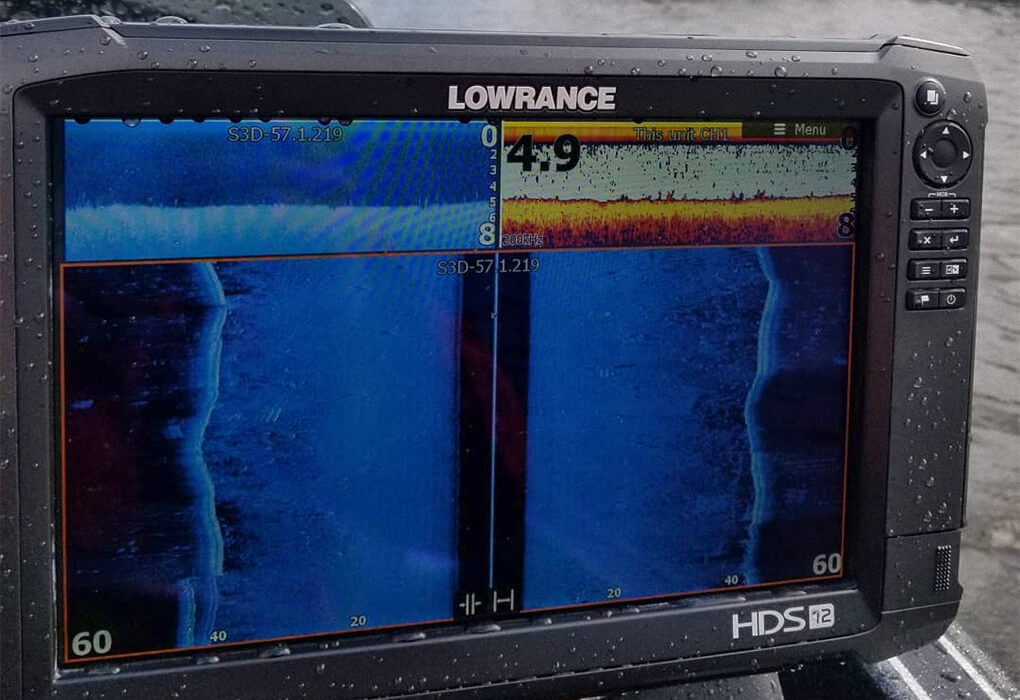
The Lowrance HDS Carbon is available in several screen sizes, including 7, 9, 12, and 16 inches. The larger screen sizes provide a more comprehensive view of the underwater environment, making it easier to locate fish.
I personally like the fact that it’s a regular split screen and not a touchscreen. I think it makes it easier to use and the SolarMAX HD helps increase the overall clarity of the HDS Carbon units.
Lowrance Totalscan Transducer
The Lowrance HDS Carbon comes equipped with the Lowrance Totalscan Transducer. This transducer provides a combination of CHIRP sonar, Downscan Imaging, and sidescan sonar for comprehensive fish finding capabilities.
The TotalScan Transducer also includes a temperature sensor, which provides anglers with accurate water temperature readings to help locate the areas where fish are most likely to be found.
Additionally, the transducer is designed to be easy to install and provides reliable and accurate readings.
NMEA 2000 Compatibility
NMEA 2000 compatibility allows you to connect your fish finder to other devices, such as radar, autopilots, and more, for added functionality. This wireless connectivity (wifi) is great for ease of use plus it provides a fast and responsive performance.
The unit comes with an ethernet port and Bluetooth combo which is perfect for sharing information across various marine electronics.
Social Proof
One of the best ways to figure out if you have a great fish finder on your hands is to read what other anglers are saying about it. The buzz around the Lowrance HDS Carbon has obviously slowed down but there are plenty of people out there wishing it was still around.

Value seems to be a big thing many people are talking about. In comparison to some of the newer models, the Lowrance HDS Carbon is priced pretty appropriately.

Either way, with the release of the HDS Live, I can’t see them ever bringing this bad boy back into circulation.
Alternatives to the Lowrance HDS Carbon
Now let’s take a look at some alternatives. Since you can’t get the HDS Carbon, you’ll want to look for an option that mimics the Carbon in terms of value and features.
All three of these are great options if you can’t find an HDS Carbon.
Lowrance HDS Live
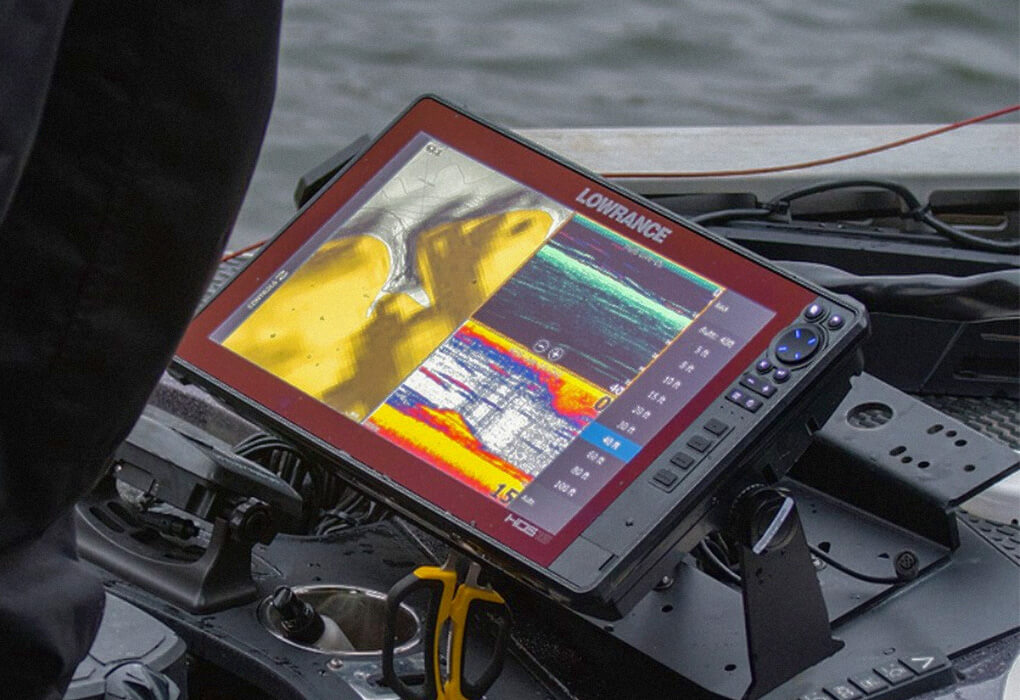
The HDS Live is the fish finder I’ve been preaching about throughout this entire review. It’s the reason why the Carbon is discontinued and it offers pretty much everything it has with additional live sonar technology.
Compared to the Lowrance HDS Carbon, the HDS Live offers several key advantages.
For one, the HDS Live has a faster and more powerful processor, which makes it more responsive and better able to handle multiple tasks at once.
It also has a more user-friendly interface and a larger, brighter screen, which makes it easier to see and use in all lighting conditions. Not to mention the fact that you get true live sonar that provides real time imaging.
Overall, while the Lowrance HDS Carbon is a solid fish finder in its own right, the HDS Live is the better option for anglers who want the latest and most advanced technology.
To learn more, read our complete review of the Lowrance HDS Live.
Lowrance Hook Reveal
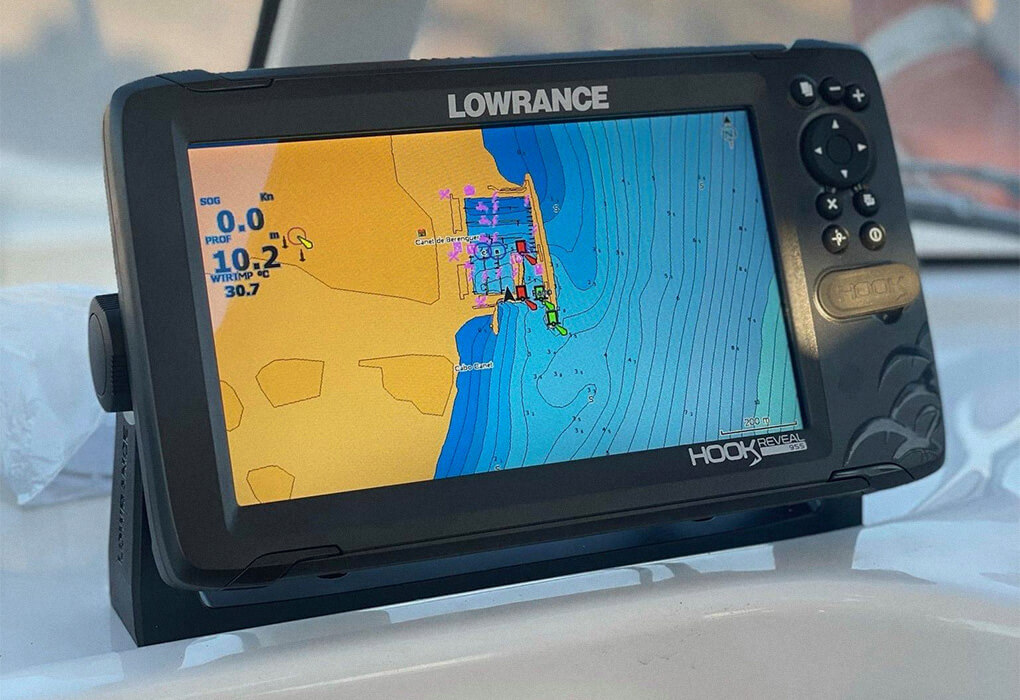
The Hook Reveal is another upgraded unit from the original Hook and Hook2.
This unit features a large, high-resolution display that provides a clear and detailed view of the underwater environment, making it easy to identify fish and structures.
It also features advanced sonar technology that helps anglers to get a more accurate and detailed picture of what’s happening beneath the water’s surface.
The Reveal is what brought the great FishReveal feature into the marketplace and while the Carbon and HDS Live offer more premium features, the Hook Reveal is a cheaper but just as good option.
Read our full Lowrance Hook Reveal review to learn all about it!
Lowrance Elite FS
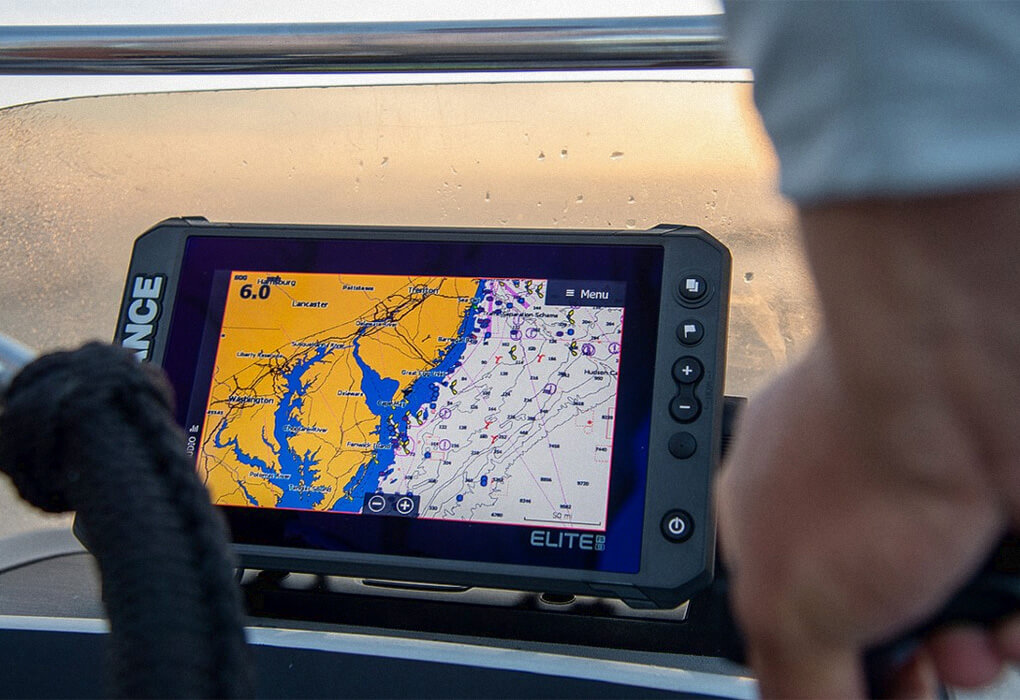
I like to think of the Elite FS as the “everyman’s” fish finder. It’s a great mid-range option that has a little bit of everything.
This fish finder offers ActiveTarget Live Sonar, which provides a real-time view of fish and their movements, as well as C-Map Contour Charts and FishReveal technology to help you locate fish and structures with ease.
Compared to the Lowrance HDS Carbon, the Elite FS 9 is a more affordable option that still offers many advanced features.
While it doesn’t have all of the same capabilities as the HDS Carbon, such as StructureScan 3D and a more powerful processor, the Elite FS 9 is still a highly capable fish finder that can help you find and catch more fish.
Plus… it’s not discontinued! Read the complete review of the Lowrance Elite FS to learn more.
Final Thoughts
There comes a time when one fish finder needs to pass the torch and it’s officially time in this Lowrance HDS Carbon review.
It’s time that we suggest to the anglers of the world that they move on from the HDS Carbon and move towards the HDS Live.
It’s the better option with added live sonar features and a faster processor. Give it a look!



